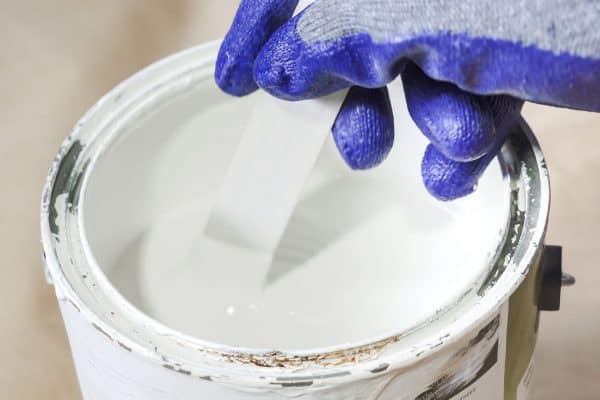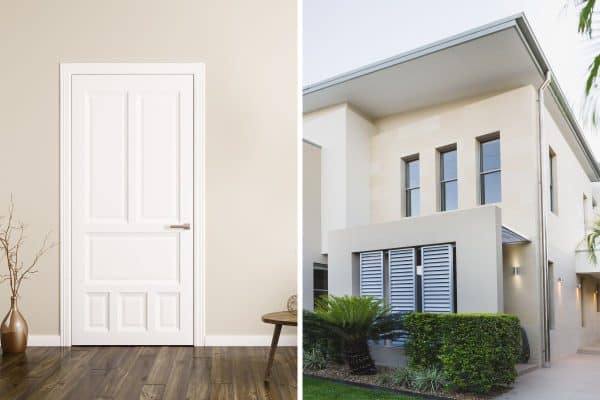Thinking about painting your ceiling? You might be curious about whether satin paint is a good choice.
Satin paint can absolutely work wonders on ceilings. It strikes a perfect balance between a flat matte finish and a glossy look that's too attention-grabbing.

One of the great things about using satin paint on your ceiling is its durability.
It's more resistant to stains and easier to clean compared to flat or matte paint.
This feature comes in handy, especially in high-humidity rooms like kitchens or bathrooms where moisture and steam can impact the appearance of the ceiling over time.
However, there's something to keep in mind: satin paint's subtle sheen has a knack for exposing imperfections on the surface of the ceiling.
To achieve top-notch results, it's crucial to prep the surface properly.
Fill in any holes or cracks, smooth out any uneven areas through sanding, and make sure to apply a high-quality primer before diving into the paint job.
With meticulous preparation, your satin-painted ceiling will not only look stunning but it'll also hold up remarkably well against everyday wear and tear.
Advantages of Satin Paint
Satin paint provides many benefits, and using it on your ceiling might be an excellent choice for your interior decoration project.

We may include affiliate links and curated AI content to highlight top design styles.
Here are some advantages of satin paint:
Durability
Satin paint has a higher sheen and is more durable than flat paint. This increases the paint's resistance to dirt, stains, and mildew.
As a result, satin paint is easier to clean and maintain compared to other finishes.
Light Reflectivity
Satin paint has a slight sheen that reflects light better than flat paint.
This can help make your room feel brighter and more spacious, which is especially helpful in rooms with limited natural light.
Aesthetic Appeal
Satin paint offers a subtle, sophisticated finish that strikes the perfect balance between flat and glossy paints.
It can add depth and character to your ceiling without being too overwhelming.
Disadvantages of Satin Paint
While satin paint offers several benefits, it also has some drawbacks.
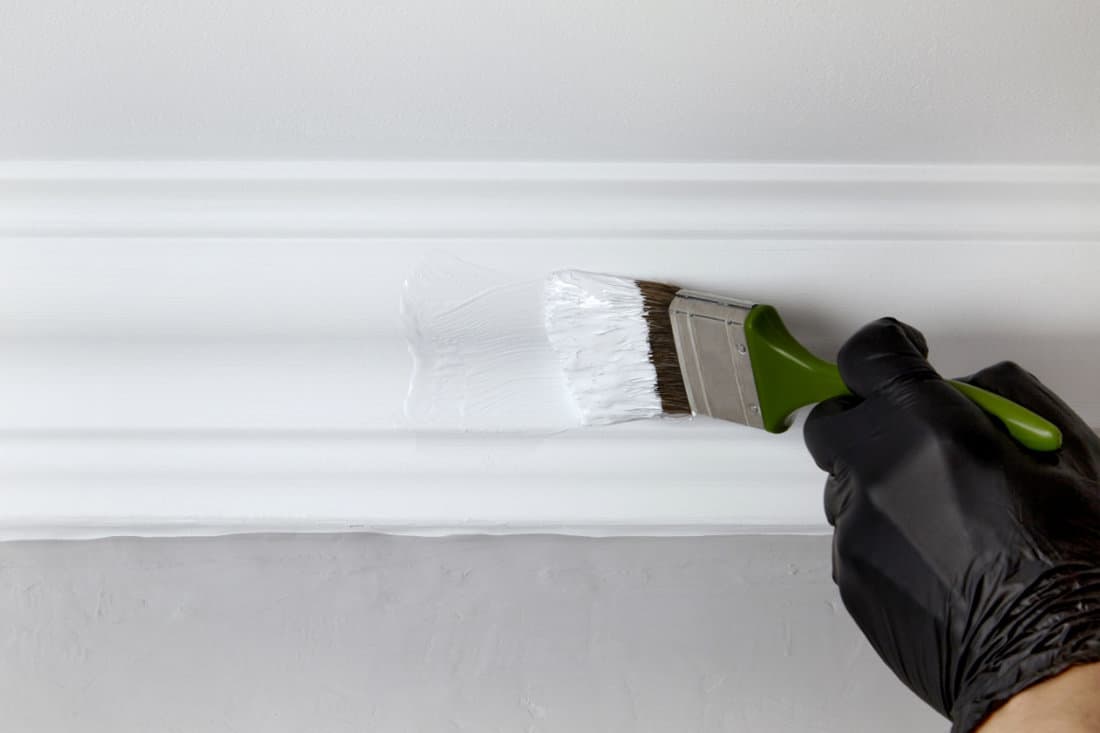
Here are a few disadvantages you should consider before using satin paint on your ceiling:
Highlights Imperfections
Satin paint's sheen can highlight surface imperfections on your ceiling, such as cracks, bumps, or uneven textures.
If your ceiling has these issues, you might want to address them before applying satin paint or choose a matte finish instead.
Challenging to Apply
Satin paint can be more challenging to apply evenly compared to flat paint, as it tends to show brush and roller marks more easily.
To avoid this issue, you'll need to pay close attention to your application technique and ensure you're using the right tools.
Slightly More Expensive
Satin paint can be slightly more expensive than flat paint, so you'll need to factor this in when planning your interior decoration budget.
However, the increased durability and ease of maintenance may be worth the extra expense in the long run.
Applying Satin Paint to Ceilings
Satin paint can be a great choice for your ceiling, as it provides a subtle sheen that adds elegance to your room.
In this section, we'll discuss how to prepare the surface and offer some tips for applying satin paint to ceilings.
Surface Preparation
Before you start painting, it's essential to properly prepare the surface to ensure the best results.
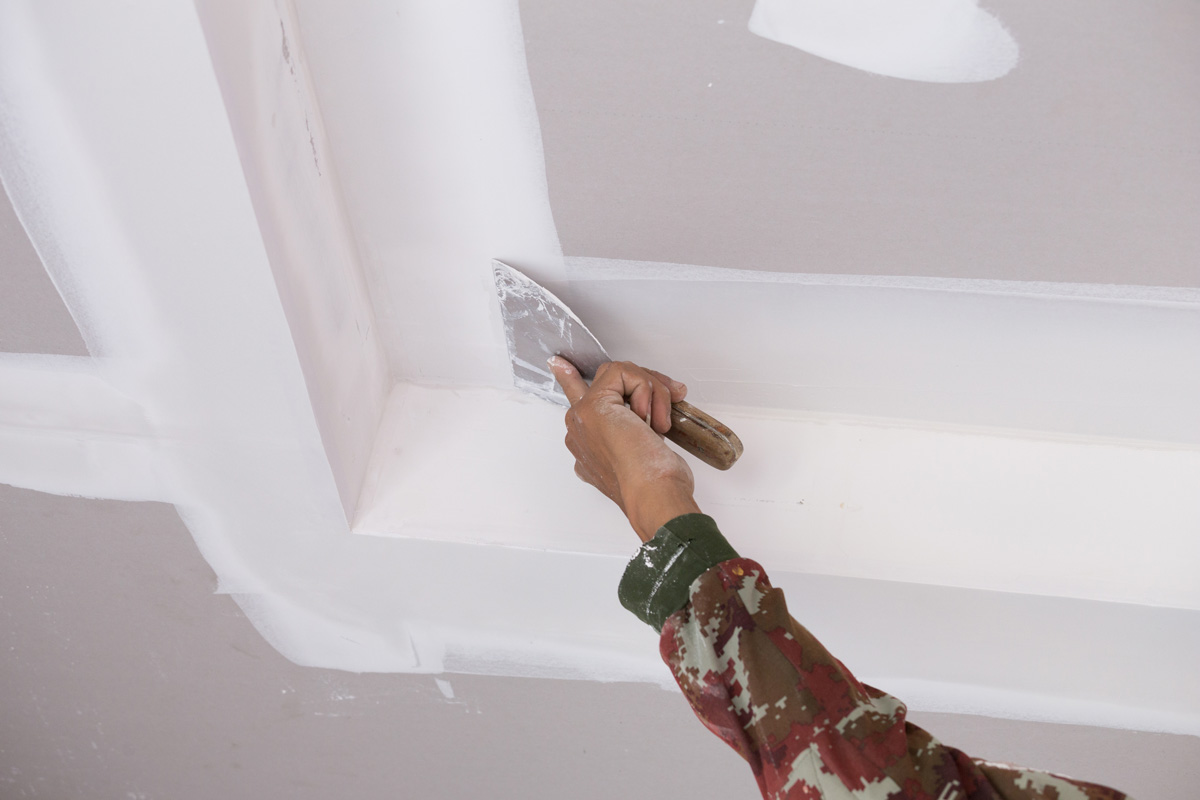
Follow these steps:
- Clean the ceiling: Remove any dust or cobwebs with a long-handled brush or vacuum with a soft brush attachment.
- Repair any imperfections: Fill cracks or holes with patching compound, let dry, and sand smooth.
- Apply primer: If your ceiling is unpainted or you're covering a darker color, apply a stain-blocking primer to ensure proper paint adhesion and coverage.
Paint Application Tips
To achieve a professional-looking finish with satin paint, keep these tips in mind while applying the paint to your ceiling:
- Use the right tools: Select a quality paintbrush for cutting in edges and a paint roller with an extension handle for the rest of the surface. A roller with a 3/8-inch nap is ideal for satin paint.
- Work in sections: Divide the ceiling into 3 feet by 3 feet sections and paint one section at a time, overlapping slightly to avoid visible seams.
- Maintain a wet edge: To avoid lap marks, always paint from a wet edge to a dry edge. This means you should not allow the edge of a previously painted section to dry before painting the adjacent area.
- Apply multiple coats: Satin paint often requires two or more coats to achieve full coverage and the desired sheen. Allow each coat to dry according to the manufacturer's recommendations before applying the next one.
Try this all-angle professional paintbrush tool for high ceilings on Amazon.
Alternative Ceiling Paint Options
When considering painting your ceiling, it is important to explore different paint finishes to find the one that best suits your needs and style preferences.
In this section, we will discuss two popular alternatives to satin paint for ceilings: flat ceiling paint and eggshell ceiling paint.
Flat Ceiling Paint
Flat ceiling paint is a great option if you want to achieve a non-reflective, matte finish.
This type of paint helps to hide imperfections or small defects on the surface of the ceiling, making it ideal for older homes or ceilings with uneven texture.
Check out this Valspar flat white paint on Amazon.
Flat paint is generally easy to apply and touch up, and it is a budget-friendly option for many homeowners.
Keep in mind that flat paint is less durable than other finishes, so it may be more prone to scuffing, marks, and stains.
However, if you value a seamless appearance and don't mind a bit of extra maintenance, flat ceiling paint might be the perfect choice for you.
Eggshell Ceiling Paint
Another alternative to satin paint is eggshell ceiling paint, which offers a subtle sheen and more durability than flat paint.
The finish is named "eggshell" because it mimics the delicate sheen of an actual eggshell, providing a soft glow that adds depth and warmth to your space.
Eggshell paint is popular for those who appreciate a mild shine without the glare or heaviness of a glossier finish.
It is more resistant to stains and scuffs than flat paint, making it a practical choice for daily wear and tear.
Additionally, its smooth finish will still help to camouflage minor surface imperfections.
Kitchen Ceiling Paint Recommendations?
When painting a kitchen ceiling, it's important to choose a paint that resists moisture and grease or is easily washable.
A good option is a paint with a satin or semi-gloss finish.
These finishes are more durable and easier to clean than a flat or matte finish, making them more suitable for areas prone to higher humidity and grease, like kitchens.
Consider Function and Appearance When Choosing Paint
In the end, when deciding whether or not to use satin paint on your ceiling, consider factors such as the room's function, desired appearance, and maintenance requirements.
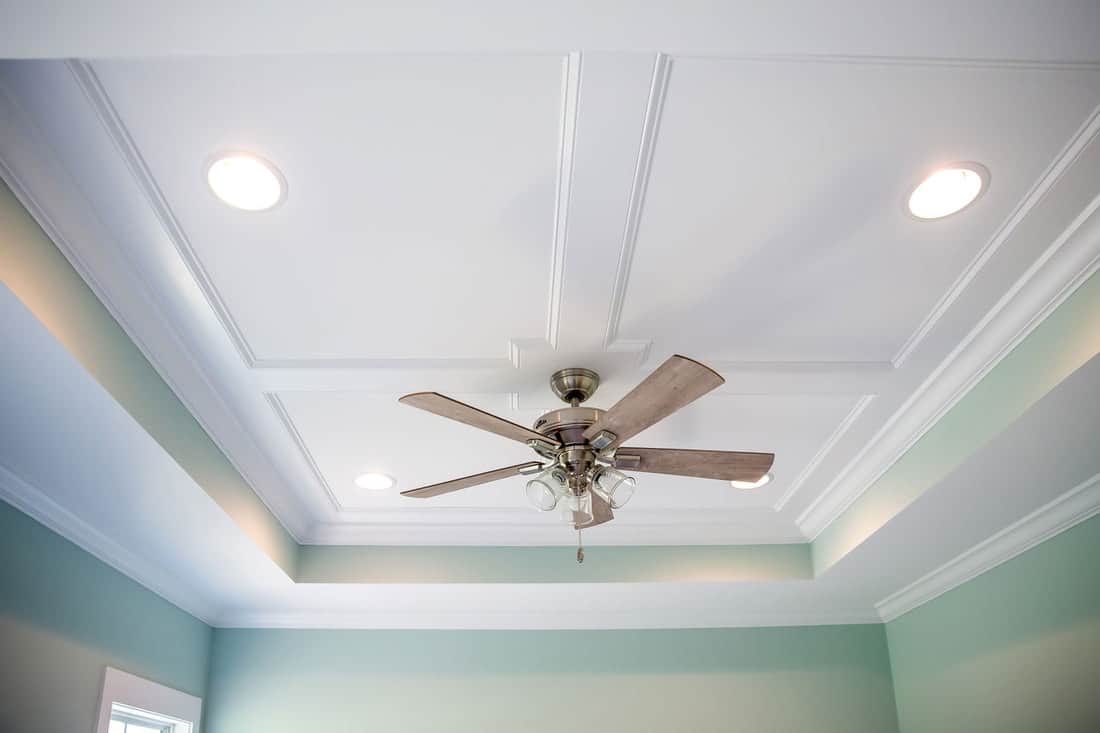
Satin paint can be a great option for areas with high humidity or moisture, such as bathrooms and kitchens, due to its durability and resistance to mildew.
Remember that using satin paint on your ceiling may highlight imperfections, so it's essential to properly prepare the surface, paying special attention to repairing any cracks, dents, or uneven areas.
If you're looking for a more forgiving finish, matte paint might be a better choice; however, satin offers a certain shine and sophistication that's perfect for some rooms.
Thank you very much for reading through! To learn more about ceiling painting, check out these other helpful articles:
What Kind Of Paint To Use On Drop Ceiling Grid? [Plus Helpful Tips & Considerations]



